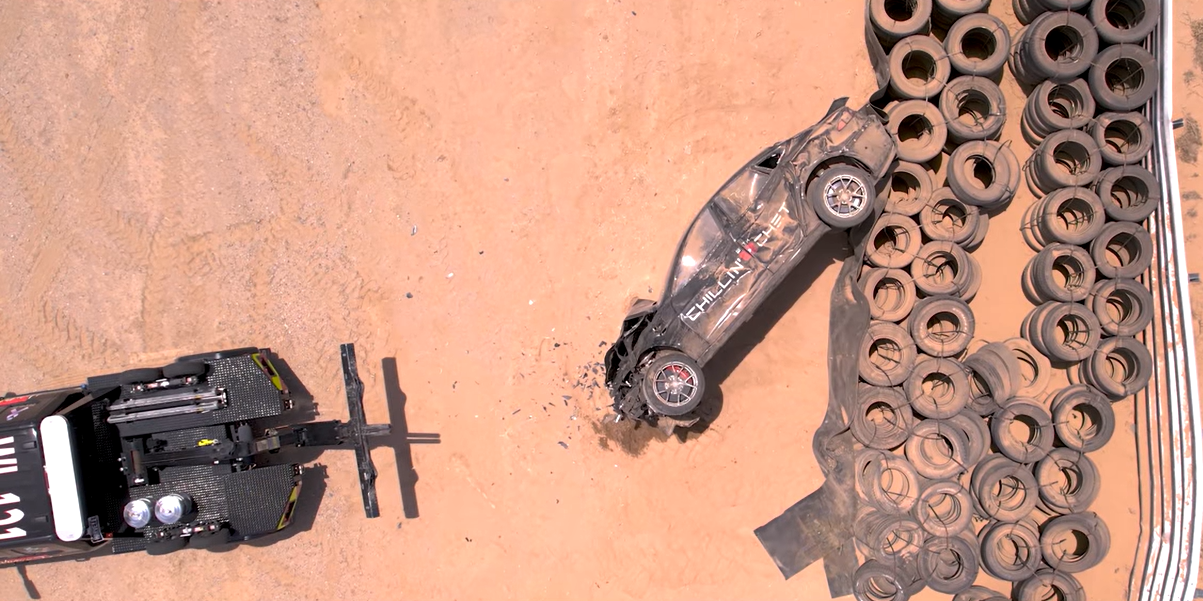Tesla Plaid YouTuber Boils Brakes and Crashes at 170 MPH

The driver behind YouTube channel Chillin' with Chet recently got a Tesla Model S Plaid. As a Tesla owner with a YouTube channel, the eponymous Chet has already cut out most of his interior in pursuit of speed and attempted to drive the car underwater twice. However, Chet noticed that the car's brakes could not keep up with its massive combination of power and weight. He decided to make a change to a more track-ready braking system, then immediately went to test it out on the track. In a decidedly not chill moment, Chet then suffered brake failure at 170 MPH.
While the driver was wearing a seat belt, he did not have a helmet on. He also did not have track-specific seats or a five-point harness. He suffered a fractured knee, a torn ACL, and five broken ribs, but survived the impact.
As Chet stresses, the new brake components were not the source of the problem. In a previous video documenting the brake change, he mentioned that he was moving to new calipers and carbon ceramic discs in the front, plus racing pads on new iron discs in the rear. He also added a steel-braided brake line to the front, but not the rear.
He did not, however, switch away from DOT3 brake fluid. Regular track drivers wisely upgrade to a more track-friendly fluid such as DOT4 (or higher, depending on what else they change in the braking system) that safely operates at higher temps along with any upgrades on pads, rotors, or whatever else. Chet says he will clarify the specifics of the failure in a yet-unreleased video, but his comment on the original video suggest that the lower boiling point of the lower-grade brake fluid caused the crash. That led to the worst-case scenario, with brakes failing near top speed on a 4800 lb sedan.
Next time you're changing the brakes on your recently-waterlogged 1000 hp electric car, please remember: A system is only as good as its points of failure, and, when you ignore any one point of failure, the consequences can be this dangerous.
You Might Also Like

 Yahoo Movies
Yahoo Movies 
